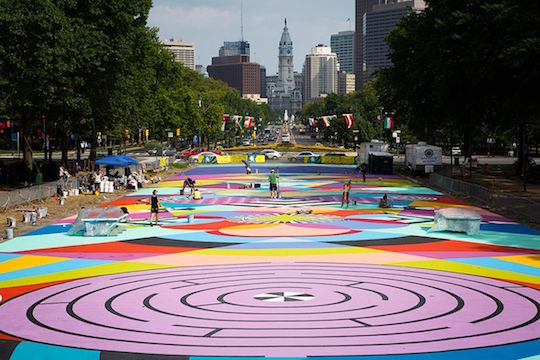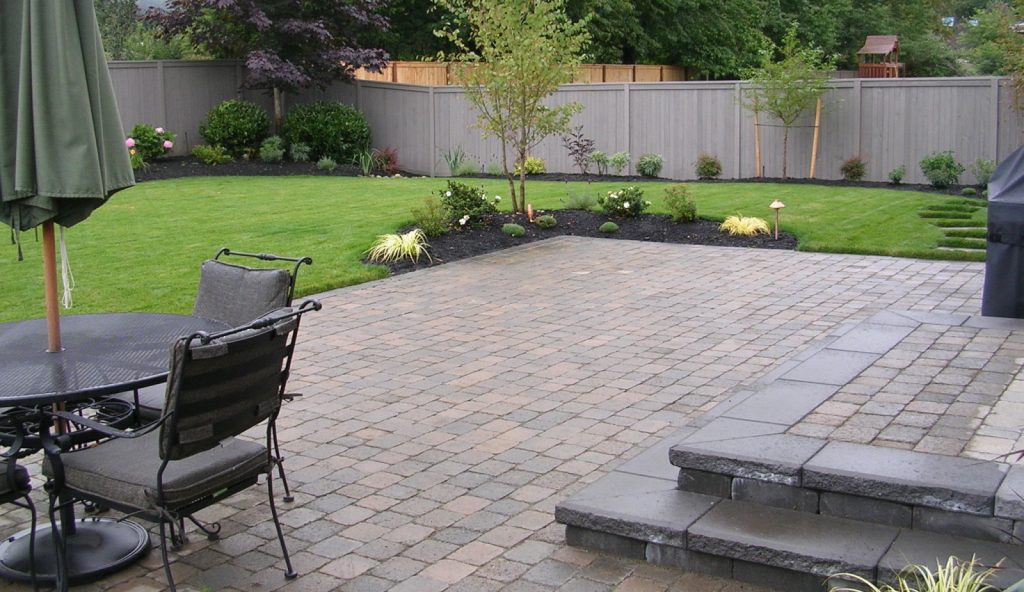The 20th century dedicated much urban space to cars. But a tactical design movement takes back some space for walkers, bikers and café patrons.
In early June 2020, through the turmoil of a pandemic and national unrest, the city of Washington DC created a bold work of street art on pavement that was seen around the world. In bright orange-yellow in a bold sans serif font, the all-caps “BLACK LIVES MATTER” instantly was seen from drone photography and, likely, helicopters hovering around the nation’s capital. It went instantly viral.
This was not the orange-yellow asphalt striping we’re used to seeing when an asphalt contractor performs striping and sealcoating service on roadways or parking lots. This was not a construction project that had been in the works for a long period of time, but it was effective in ways beyond simple art.
Roadway, plaza, sidewalk and other versions of art where feet and vehicular tires roll is not new. But it’s increasingly popular to put paint to asphalt, showing us how art and ingenuity can transform public spaces, turning the ordinary into the extraordinary. And just as important, asphalt art can serve vital safety functions and support local commerce and causes.
Two-dozen such projects that preceded the protest art in Washington are documented in a 2019 publication titled the Asphalt Art Guide, funded by Bloomberg Associates and The Street Plans Collaborative, the latter of which describes itself as “the progenitors and stewards of the Tactical Urbanism Movement.” TUM is a catchall term for grassroots groups acting quickly to address street safety for pedestrians and bicyclists, and other urban needs, with low-cost, easily executed interventions.
The Asphalt Art Guide includes installations in a range of cities, stretching from Milan and London to Portland, Oregon; Des Moines, Iowa; Chicago; Asheville, North Carolina; Pittsburgh; Montreal; Philadelphia; and New York City, among others. In one project in Miami Beach, the Rue Vendome project established a public space for events (it also includes an oversized chessboard) from what was previously a nine-space parking lot. In Bogota, Columbia a traffic circle occupying a wide expanse of space at the convergence of eight avenues redirected traffic to use a majority of the space for cafes and pedestrians, all with the help of bollards and pink, aqua and yellow geometric shapes on the asphalt.
With budgets ranging from $300 to $50,000, the projects featured in the Asphalt Art Guide use a variety of materials: latex and acrylic traffic marking paint (sometimes with non-slip additives); commercial grade driveway paint; acrylic deck stain; thermoplastic and pre-formed thermoplastic; road marking paint; acrylic exterior paint; epoxy-based pavement coating; epoxy modified acrylic coating; and water-based paint.
Various metrics are assessed to determine the relative success of these asphalt art projects. Using traffic counting devices, human observers, and surveys, the projects are evaluated for their ability to calm vehicular traffic and to draw pedestrians and events to the locations. The reported renewal and extensions of many of these projects – beyond a short (1-5 year) life expectancy – suggests the findings are favorable.
In fact, what many of these projects accomplish is they provide data that make such projects more permanent parts of the urban streetscapes. The longevity of the political street art in Washington in the summer of 2020 is yet to be determined, but the amount of media coverage it has received already makes it a permanent image, burnished into the minds of people looking for solutions, across the country and around the world.


